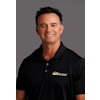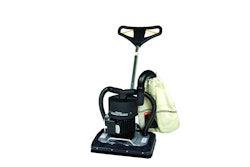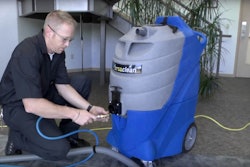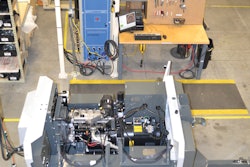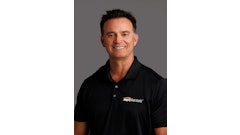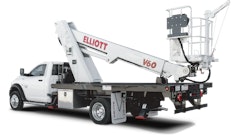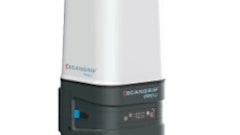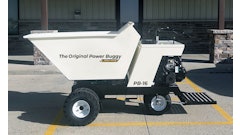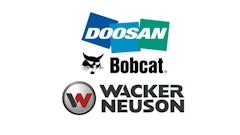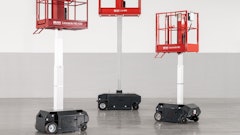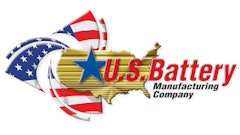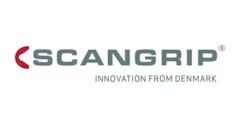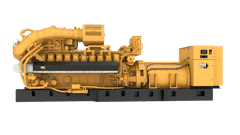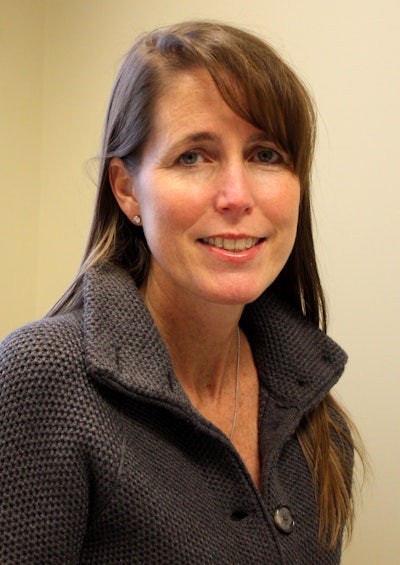
IPAF’s North American Regional Council (NARC) continues to work toward promoting IPAF’s objectives to contractors and rental companies in the region. We sat down with Chairperson Teresa Kee of NES Rentals and Vice Chairperson Jim Dorris of United Rentals, to learn more about the organization’s objectives and goals now and into the future.
Elevating Safety: What’s your personal background and what led you to your role with IPAF’s North American Regional Council?
Teresa Kee, director, environment, health and safety at NES Rentals, and chairperson of the NARC: I was in environmental consulting for about 13 years, and then took on a role at Sears, Roebuck & Co. corporate offices, managing their due diligence department. I was involved in all real estate transactions and my group was also responsible for mold and asbestos management within our facilities. I moved into the leadership role for the Environmental, Health and Safety Department there before I left to go to NES Rentals, where I’ve been for 11 years now. Prior to that, I didn’t have any background in the aerial industry. My main focus was always environmental, but I found the aerial industry very interesting. I enjoy being involved in different organizations, and working with committees and individuals. From there, I transitioned into working with IPAF and eventually became part of the NARC, currently as chairperson.
Jim Dorris, vice president of health, safety, environment & sustainability; and executive sponsor, United Academy at United Rentals, and vice chairperson of the NARC: I started my career with the Frito-Lay division of PepsiCo in Tennessee and transitioned to Pfizer, and then from Pfizer I went to Cummins Inc., where I was responsible for their global workplace safety program. To that point, I’d had little to no exposure to the aerial industry until the opportunity with United Rentals came along. IPAF was one of the first organizations I looked at to help me understand the history, standards and practices of the aerial industry. Later I had the opportunity to join the NARC, and I was happy to do so. I really buy into the council’s mission of elevating the industry through training and safety. I think it’s really important, erases competitive lines and allows us to work together to help make the industry that’s our bread and butter, better. We’re serving the industry that serves us.
ES: What are IPAF’s and the NARC’s current primary goals and initiatives?
Kee: IPAF is very focused on developing and promoting its eLearning module for operator training. The ultimate goal is to be able to provide eLearning in various languages all over the world.
Dorris: Besides specific objectives, IPAF’s ultimate goal is always education and training, as well as helping membership and its voices shape industry standards.
Kee: Yes, the overall goal is really generating awareness about safety. One of IPAF’s major initiatives is the reporting of incidents. Once we can get people to report them, then we can start identifying what are the most common problems and where IPAF can focus its resources, as well as where IPAF’s members can focus their own resources.
ES: Is that gaining momentum?
Kee: It’s been a little bit of a struggle. Members do have concerns about reporting incidents. IPAF is working hard to promote its incident reporting database and assure its members and others that the information will remain confidential. Members and others do have the ability to submit incidents anonymously, which is an important feature encouraging incident reporting.
Another initiative centers on qualifications for service technicians. Companies need to understand how to help employees, particularly service technicians, progress and gain knowledge. IPAF is just getting started on this, but we’re looking at holding meetings on the subject later this year.
We’re also offering and developing webinars that cover a variety of topics. We’ve had two so far this year, with another one planned. We’d like to do more of those in the coming months.
ES: How is IPAF’s message to its North American audience different from its message to the European audience?
Kee: IPAF’s PAL Card is very well recognized in Europe. We’re still trying to create that recognition here in the US.
Dorris: Regulations are more definitive and prescriptive in Europe. They’re looked upon a little bit more favorably there. In general, Americans don’t like to be told how they’re going to do something. That’s been a challenge and IPAF has done a good job of changing its approach to be able to reach the North American audience.
ES: How has IPAF achieved that?
Dorris: First of all, IPAF provides training products that work. But the organization has also been willing to change its approach and compromise on position and policy a little bit to be able to fit the North American point of view.
ES: Do you have personal goals for serving on the NARC?
Kee: For me, it’s about the connection between the different members. The sharing and benefits we get from that is incredible. IPAF is really bringing us all together, and in working together we’re creating a relationship so we can go to each other and say, what are you going to do about this or that? I’d like to see us create some type of mentoring program, with larger companies helping smaller companies, or maybe experienced health and safety managers helping newer health and safety managers. I’m pretty passionate about the connections that are created and the benefits that come from them.
Dorris: It really is about bringing people and their expertise together. We’re eliminating the competitive lines to come together and collect the best ideas. As for my personal goal, I’d like to help the team come up with ways to contribute ideas to companies that might not have the resources that some of the larger companies do. When it comes down to getting the proper training, some companies either don’t know what they don’t know, or they don’t have the resources, but there’s a lot we can contribute there.
ES: What is it like working with competitors? Any challenges?
Dorris: The beauty of the NARC is we put a lot of that competitive stuff aside. Teresa and I worked together on some projects and I want [NES] to be successful with them. I’m not thinking about them as competitors in this setting. Our end goal is the same, to improve worker safety in the industry we all participate in. Whether the idea comes from IPAF, United, NES or Sunbelt… as long as education, training and expertise is being conveyed to the people who need it the most, it’s a win. As for challenges, we do have to be mindful about sharing any information that could be competitive, but everyone does a really good job of that. It’s never been an issue.
Kee: I agree.
ES: What would you like our audience to know about IPAF and what it has to offer?
Dorris: I’d like them to know about the resources IPAF provides and the benefits of those resources. IPAF is also another voice for the industry and that’s needed.
Kee: I think IPAF is different from other associations in that its primary focus is aerial work platforms and mast climbing work platforms, whereas other associations have a variety of members from different industries. IPAF offers AWP companies – whether it’s a manufacturer, dealer, or end user – resources related to that equipment and the safe use of that equipment.
Also, by offering and promoting high-quality operator training products, IPAF is raising the bar for quality training throughout the industry.


